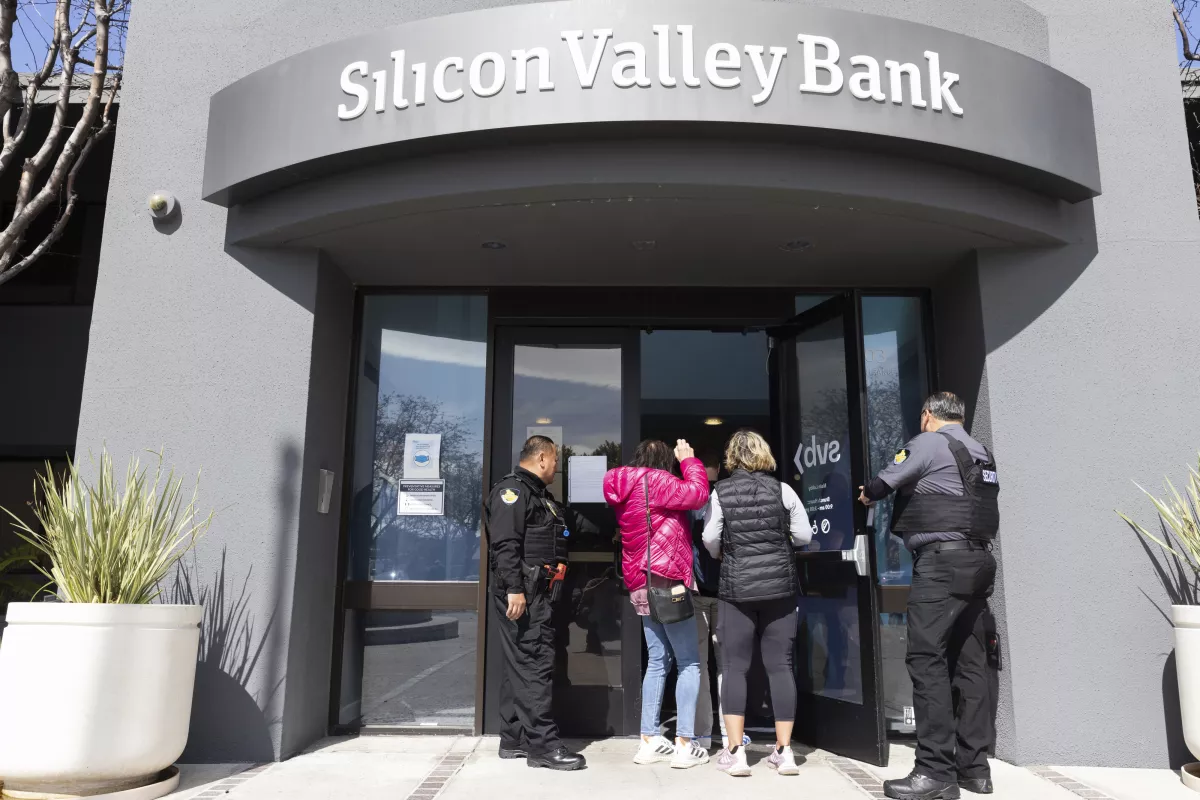When two U.S. banks linked to the technology sector collapsed a few weeks ago, among the investors who lost millions of dollars was the public sector pension fund responsible for guaranteeing the pensions of teachers, firefighters and other government employees.
Like others, the pension fund has reaped the rewards of bull markets and, like many investors, has also gone through problems with deteriorating investments.
Many lost value last year when their investments in Russian assets became virtually worthless after most of the globe isolated the Russian economy following the invasion of Ukraine. Some held shares in cryptocurrency-related businesses that have plummeted after the fall of FTX and its founder, Sam Bankman-Fried.
Since pension funds are diversified investors whose holdings in Silicon Valley Bank and Signature Bank represented just small portions of their portfolios, experts are not overly concerned about losses from relatively small holdings.
But the losses demonstrate how pensions are exposed to risk as they try to reduce funding shortfalls.
Here’s a look at the status of public pensions and the risks they face.
WHICH FUNDS SUFFERED LOSSES WITH INVESTMENTS IN COLLAPSED BANKS?
Equable, a private nonprofit organization dedicated to researching public pensions and advocating for their safety, has identified more than a score of public sector pension funds with direct holdings in Silicon Valley, Signature Bank, or both institutions.
In all cases, bank shares accounted for no more than a few dollars for every $10,000 in assets in the fund.
The fund with the largest stake in Silicon Valley Bank (SVB) was CalPERS, a California public employee fund worth $443 billion. It reported owning shares of SVB for $67 million and Signature Bank for $11 million. In total, that represents 0.02% of the fund’s assets.
Among those holding shares in one or both banks were the State Teachers Retirement System of Ohio, the New York State Common Fund and the Washington State Investment Board.
Trading in the stock of both banks was suspended this month. SVB securities were selling for more than $700 at the start of 2022, while Signature Bank’s were selling for around $300.
It is possible that many pension systems also held shares of the banks as part of index fund investments. It is difficult to know for sure because most funds do not disseminate their full holdings in real time.
WHAT DO THE LOSSES MEAN?
They don’t help pensions, but experts don’t consider those losses to be alarming.
Pension funds are huge investors looking to diversify their assets. And while there were some signs of trouble among the collapsed banks, they were still considered significant institutions.
“It’s wrong to say that investing only in Silicon Valley Bank stocks is risky,” said Anthony Randazzo, chief executive officer of Equable.
WHAT IS THE STATUS OF PUBLIC PENSIONS?
They have improved in recent years, but most still lack sufficient assets to pay the benefits they promised.
Most plans were fully funded in 2000. But around that time, many pension plans increased their benefits, reduced government contributions, or did both. Those decisions magnified the impact of the 2008 financial crisis on the funds, and market losses amplified their funding shortfalls. By 2016, the Pew Charitable Trusts found that state-run funds had just two-thirds of what they needed to cover their obligations.
With mostly robust markets, higher government contributions and benefit changes – including reducing retirement promises for newly hired workers and forcing employees to increase their contributions – fund conditions have improved. By 2021, after a year of huge market growth, Pew estimated that state pensions were 84% funded, the highest level since before the Great Recession began in 2008.
David Draine, who studies public-sector retirement systems at Pew, said funding shortfalls are probably right now where they were before the market turmoil during the coronavirus pandemic.
But he stressed that higher government contributions – including ones above what is required in states such as California and Connecticut – and other changes have increased the likelihood that they will withstand future market declines.
“It’s a low standard,” Draine said, “but they’re better prepared than they were before the Great Recession.”
ARE PENSION FUNDS MAKING RISKY INVESTMENTS?
Stocks and fixed-asset investments still comprise the majority of public-sector pension fund holdings monitored by Boston College’s Center for Retirement Research.
But the share of assets in other, often more volatile, investments such as real estate and hedge funds has been increasing over the past two decades. For example, investments in venture capital have nearly quadrupled from 2.3% of the funds’ share in 2001 to 8.7% in 2021.
“They are being asked to earn between 6.5% and 7.5% a year on average,” Randazzo said. “The only way that is possible is by taking significant risks.”
Randazzo said that if governments want to make pension funds more secure, they can increase their contributions. But as more taxpayer money goes into retirement funds, there will be less money for other priorities such as schools, roads and tax cuts.
Keith Brainard, director of research at the National Association of State Retirement Administrators, points out that the 2001 stock market crash was a major blow to pensions because most of their holdings were in stocks.
Investing in other assets can help mitigate stock market losses, he noted.
“Some people cynically describe it as ‘going after yields,'” Brainard stated. “I think ‘diversification’ is a better description.”

